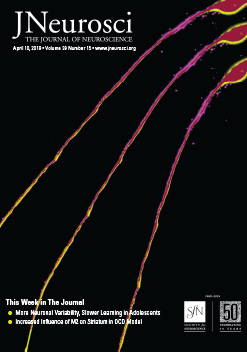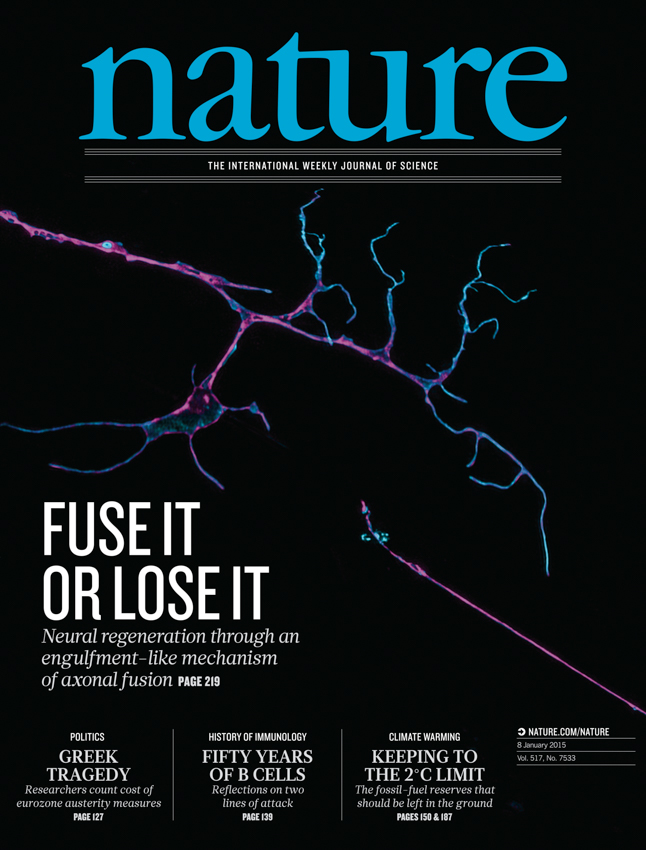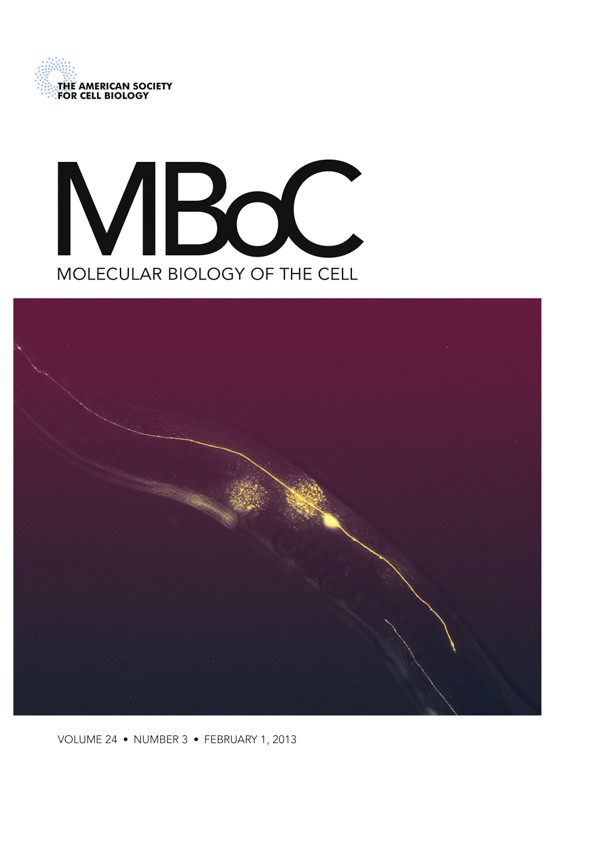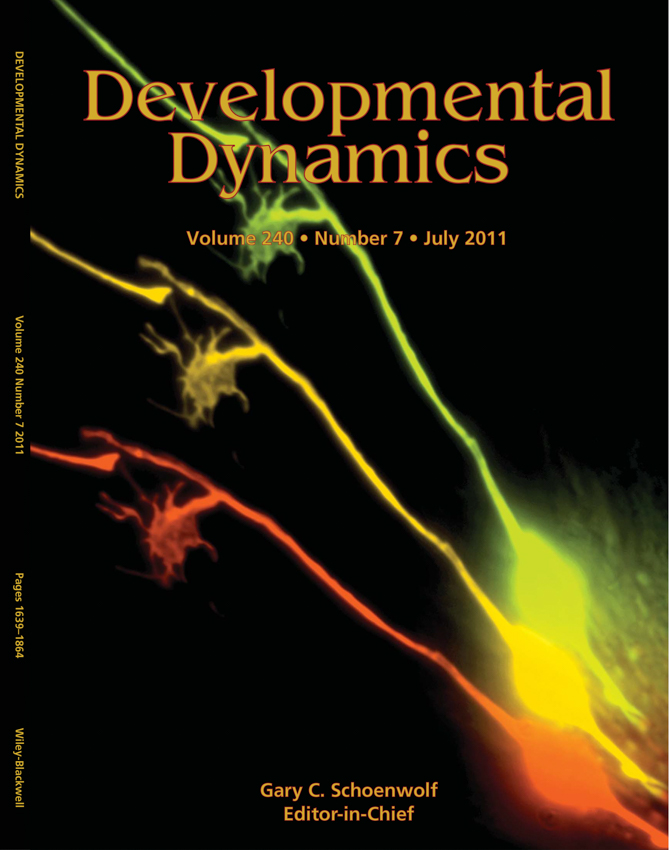Hilliard publications
Gormal, R.S., Padmanabhan, P., Kasula, R., Bademosi, A.T., Coakley, S., Giacomotto, J., Blum, A., Joensuu, M., Wallis, T.P., Lo, H.P., Budnar, S., Rae, J., Ferguson, C., Bastiani, M., Thomas, W.G., Pardon, E., Steyaert, J., Yap, A.S., Goodhill, G.J., Hilliard, M.A., Parton, R.G., and Meunier, F.A. Modular transient nanoclustering of activated b2-adrenergic receptors revealed by single-molecule tracking of conformation-specific nanobodies. PNAS, 2020, 117: 30476-30487.
Giordano-Santini, R., Kaulich, E., Galbraith, K.M., Ritchie, F.K., Wang, W., Li, Z., and Hilliard, M.A. Fusogen-mediated neuron-neuron fusion disrupts neural circuit connectivity and alters animal behavior. PNAS, 2020, 117: 23054-23065.

Coakley, S., Ritchie, F., Galbraith, K., and Hilliard M.A. Epidermal control of axonal attachment via ß-spectrin and the GTPase-activating protein TBC-10 prevents axonal degeneration. Nature Communications, 2020, 11: 133. doi: 10.1038/s41467-019-13795-x.
Neumann, B., and Hilliard, M.A. Axonal repair by fusion: pitfalls, consequences and solutions. FASEB J., 2019, 33: 13071-13074.
Linton, C., Riyadh, M.A., Ho, X.H., Neumann, B., Giordano-Santini, R.* and Hilliard, M.A.* Disruption of RAB-5 increases EFF-1 fusogen availability at the cell surface and promotes the regenerative axonal fusion capacity of the neuron. Journal of Neuroscience, 2019, 39: 2823-2836. (Cover image).
Neumann, B.*, Linton, C, Giordano-Santini, R., and Hilliard M.A.* Axonal fusion: an alternative and efficient mechanism of axonal repair. Progress in Neurobiology, 2019, 173: 88-101.
Donato, A.≠, Kagias, K.≠, Zhang, Y.* and Hilliard M.A.* Neuronal sub-compartmentalization: a strategy to optimize neuronal function. Biological Reviews, 2019, 94: 1023-1037. doi: 10.1111/brv.12487.
Offenburger, S.L., Ho, X.Y., Tachie-Menson T., Coakley, S., Hilliard, M.A. and Gartner, A. 6-OHDA-induced dopaminergic neurodegeneration in Caenorhabditis elegans is promoted by the engulfment pathway and inhibited by the transthyretin-related protein TTR-33. PLoS Genetics, 2018, 14: e1007125. doi: 10.1371/journal.pgen.1007125.
Chand K.K., Lee, K.M., Lee, J.D., Hao, Q., Willis, E.F., Lavidis, N.A., Hilliard, M.A. and Noakes, P.G. Defects in synaptic transmission at the neuromuscular junction precedes motor deficits in TDP-43Q331K transgenic mouse model of amyotrophic lateral sclerosis. FASEB J., 2018, doi: 10.1096/fj.201700835R.
Abay, Z., Wong, Y., M., Teoh, J.S. Vijayaraghavan, T, Hilliard, M.A. and Neumann, B. Phosphatidylserine ‘save-me’ signals drive functional recovery of severed axons in Caenorhabditis elegans. PNAS, 2017, 114: E10196-10205.
Ritchie F.K.*, Knable, R.*, Chaplin, J.*, Gurnsansky, R., Gallegos M., Neumann, B., and Hilliard, M.A. The heterochronic gene lin-14 controls axonal degeneration in C. elegans neurons. Cell Reports, 2017, 20: 2955-2965.
Gorke, S.K., Hegarty, E.M., Mondal, S., Zhao, P., Ghorashian, N., Hilliard, M.A., and Ben-Yakar A. A multi-trap microfluidic chip enabling longitudinal studies of nerve regeneration in Caenorhabditis elegans. Scientific Reports, 2017, 7: 9837. doi:10.1038/s41598-017-10302-4.
Fogarty, M.J., Klenowski, P.M., Lee, J.D., Drieberg-Thompson, J.R., Bartlett, S.E., Ngo, S.T., Hilliard, M.A., Bellingham, M.C., and Noakes, P.G. Cortical synaptic and dendritic spine abnormalities in a presymptomatic TDP-43 model of amyotrophic lateral sclerosis. Scientific Reports, 2016. doi:10.1038/srep37968.
Giordano-Santini, R.*, Linton, C., and Hilliard, M.A.* Cell-cell fusion in the nervous system: Alternative mechanisms of development, injury, and repair. *Corresponding authors. Seminars in Cell & Developmental Biology, 2016, 60: 146-154.

Gallotta, I., Mazzarella, N., Donato, A., Esposito, A., Chaplin, J.C., Silvana Castro, S., Zampi, G., Battaglia, G.S., Hilliard, M.A., Bazzicalupo, P., and Di Schiavi, E. Neuron-specific knock-down of SMN1 causes neuron degeneration and death through an apoptotic mechanism. Human Molecular Genetics, 2016, 25: 2564-2577.
Nichols, A.L.A., Meelkop, E., Linton, C., Giordano-Santini, R., Sullivan, R.K., Donato, A., Nolan C., Hall, D.H, Xue, D., Neumann, B.* and Hilliard, M.A.* The apoptotic engulfment machinery regulates axonal degeneration in C. elegans neurons. Cell Reports, 2016, 14: 1673-1683. *Corresponding authors.
Neumann, B., Coakley, S., Giordano-Santini, R., Linton, C., Lee, E.S., Nakagawa, A., Xue, D. and Hilliard, M.A. EFF-1-mediated regenerative axonal fusion requires components of the apoptotic pathway. Nature, 2015, 517: 219-222. (Cover image).
Lee H., Kim, S.A., Coakley, S., Mugno, P., Hammarlund, M., Hilliard M.A. and Lu, H. A multi-channel device for high-density target-selective stimulation and long-term monitoring of cells and subcellular features in C. elegans. Lab on a Chip, 2014, 14: 4513-4522.
Neumann, B. and Hilliard, M.A. Loss of MEC-17 leads to microtubule instability and axonal degeneration. Cell Reports, 2014, 6: 93-103.

Williams, D.C., El Bejjani, R., Mugno Ramirez, P., Coakley, S., Kim, S.A. Lee, H., Wen, Q., Samuel, A., Lu, H.*, Hilliard, M.A.*, and Hammarlund, M.* Rapid and permanent neuronal inactivation in vivo via subcellular generation of reactive oxygen with the use of KillerRed. Cell Reports, 2013, 5: 553-563. *Corresponding authors.
Kirszenblat, L., Neumann, B., Coakley, S., and Hilliard, M.A. A dominant mutation in MEC-7/β-tubulin affects axon development and regeneration in Caenorhabditis elegans neurons. Molecular Biology of the Cell, 2013, 24: 285-296. (Cover image).
Schlipalius, D.I., Valmas, N., Tuck, A.G., Jagadeesan, R., Ma, L., Kaur, R., Goldinger, A., Anderson, C., Kuang, J., Zuryn, S., Mau, Y.S., Cheng, Q., Collins, P.J., Nayak, M.K., Schirra, H.J., Hilliard, M.A.,* and Ebert, P.R. * A core metabolic enzyme mediates resistance to phosphine gas. Science, 2012, 338: 807-810. *Corresponding authors.
Cáceres, I.dC., Valmas, N., Hilliard, M.A., and Lu, H. Laterally orienting C. elegans using geometry at microscale for high-throughput visual screens in neurodegeneration and neuronal development studies. PLoS One, 2012, 7: e35037. doi:10.1371/journal.pone.0035037. (Selected by the Faculty of 1000).
Kirszenblat, L., Pattabiraman, D., and Hilliard, M.A. LIN-44/Wnt directs dendrite outgrowth through LIN-17/Frizzled in C. elegans neurons. PLoS Biology, 2011, 9: e1001157. doi:10.1371/journal.pbio.1001157. (Synopsis in the same issue).

Neumann, B., Nguyen, K.C.Q., Hall, D.H., Ben-Yakar, A. and Hilliard, M.A. Axonal regeneration proceeds through specific axonal fusion in transected C. elegans neurons. Developmental Dynamics, 2011, 240: 1365-1372. (Cover image, highlighted in the Editor’s choice in Science).
Burne, T., Scott, E., van Swinderen, B., Hilliard, M., Reinhard, J., Claudianos, C., Eyles, D., and McGrath, J. Big ideas for small brains: what can psychiatry learn from worms, flies, bees and fish? Molecular Psychiatry, 2010, 16: 7-16. (Cover image).
Hilliard, M.A. Axonal degeneration and regeneration: a mechanistic tug-of-war. Journal of Neurochemistry, 2009, 108: 23-32.
Guo, S.X., Bourgeois, F., Chokshi, T., Durr, N.J., Hilliard, M.A., Chronis, N. and Ben-Yakar, A. Femtosecond laser nanoaxotomy lab-on-a-chip for in vivo nerve regeneration studies. Nature Methods, 2008, 5: 531-533.
Chalasani, S.H., Feinberg, E.H. and Hilliard, M.A. Global ‘worming’. Genome Biology, 2007, 8: 314. (Report on the 16th International C. elegans Meeting).
Hilliard, M.A. and Bargmann, C.I. Wnt signals and Frizzled activity orient anterior-posterior axon outgrowth in C. elegans. Developmental Cell, 2006, 10: 379-390. (Selected by Faculty of 1000).
Pan, C.L., Howell, J.E., Clark, S.G., Hilliard, M.A., Cordes, S., Bargmann, C.I. and Garriga, G. Multiple Wnt homologs regulate anteriorly directed cell and growth cone migrations in Caenorhabditis elegans. Developmental Cell, 2006, 10: 367-377. (Selected by Faculty of 1000).
Sapio, M.R.*, Hilliard, M.A.*, Cermola, M., Favre, R. and Bazzicalupo, P. The Zona Pellucida domain containing proteins, CUT-1, CUT-3 and CUT-5, play essential roles in the development of the larval alae in Caenorhabditis elegans. Developmental Biology, 2005, 282: 231-245. * Equal contribution.
Hilliard, M.A.*, Apicella, A.J.*, Kerr, R.*, Suzuki, H., Bazzicalupo, P. and Schafer, W.R. In vivo imaging of C. elegans ASH neurons: cellular response and adaptation to chemical repellents. EMBO Journal, 2005, 24: 63-72. * Equal contribution.
Hilliard, M.A., Bergamasco, C., Arbucci, S., Plasterk, R.H.A. and Bazzicalupo, P. Worms taste bitter: ASH neurons, QUI-1, GPA-3 and ODR-3 mediate quinine avoidance in Caenorhabditis elegans. EMBO Journal, 2004, 23: 1101-1111.
Hilliard, M.A., Bargmann, C.I. and Bazzicalupo, P. C. elegans responds to chemical repellents by integrating sensory inputs from the head and the tail. Current Biology, 2002, 12: 730-734. (Dispatch in the same issue).
Rinaldo, C., Bazzicalupo, P., Ederle, S., Hilliard, M.A. and La Volpe, A. Roles for Caenorhabditis elegans rad-51 in meiosis and in resistance to ionizing radiation during development. Genetics, 2002, 160: 471-479.
Rugarli, E.I., Di Schiavi, E., Hilliard, M.A., Arbucci, S., Ghezzi, C., Facciolli, A., Coppola, G., Ballabio, A. and Bazzicalupo, P. The Kallmann syndrome gene homolog in C. elegans is involved in epidermal morphogenesis and neurite branching. Development, 2002, 129: 1283 1294. (Selected by Faculty of 1000).
Salcini, A.E., Hilliard, M.A., Croce, A., Arbucci, S., Luzzi, P., Tacchetti, C., Daniell, L., De Camilli, P., Pelicci, P.G., Di Fiore, P.P. and Bazzicalupo, P. The Eps15 C. elegans homologue EHS-1 is implicated in synaptic vesicle recycling. Nature Cell Biology, 2001, 3: 755-760. (Selected by Faculty of 1000).
Bazzicalupo, P., Hilliard, M.A., Lewis, E., De Riso, L., Sebastiano, M. and Ristoratore, F. Neurons and genes involved in chemical sensitivity in nematodes. Parasite, 1994, 1: 58-60.
